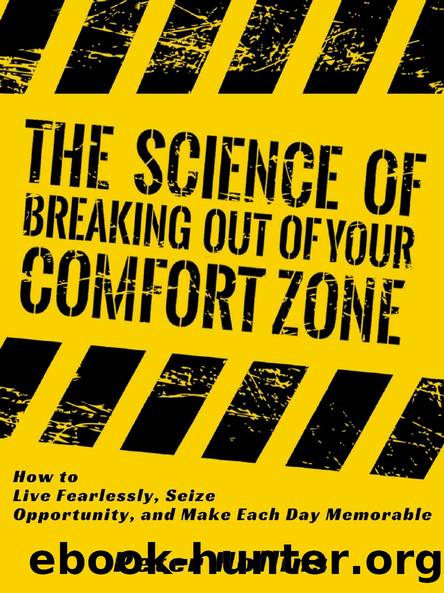The Science of Breaking Out of Your Comfort Zone by Peter Hollins

Author:Peter Hollins
Language: eng
Format: epub
Published: 2019-09-03T00:00:00+00:00
These sacrifices might sound exceptionally rough in these days of convenience and accessibility.
Whatâs the point of this, again? Remember what the proposition of stoicism entails: living as if you were poor, intentionally depriving yourself of pleasure, and giving up comfortâso nothing is outside your comfort zone.
Resist Your Urges
Itâs interesting to consider how Cato would have preserved his ethics in contemporary Western society, where itâs extremely easy for anyone to satisfy their urges. Indeed, we would find it almost odd if we werenât able to find instant solutions for our every desire. As punk artist Jello Biafra once ironically fantasized, âThe happiness you have demanded is now mandatory.â
Cato pursued a life of eliminating urges, but in our time thereâs almost no escape from our internal impulses or the actions and matters that can satisfy them immediately. But learning to exhibit self-control in acquiescing to sudden cravings is an obvious way to chip away at your comfort zone.
Zen priest Susan OâConnell has a favorite meditation instruction that you can adapt to any activity you can think of:
When youâre meditating and you feel like getting up, donât; then when you feel the urge to get up a second time, donât; and when you feel the urge to get up a third time, then get up. So you sit through the urge, the discomfort, twice before finally giving in the third time. This is a nice balance so that youâre pushing your comfort zone a little.
Applying this technique to any kind of impulse should be easy enough to execute. If you sense a sudden desire for a nighttime snack, acknowledge the urgeâbut do nothing. When it happens a second time, do the same. Finally, after youâve experienced, acknowledged, and maybe even reflected on the urge for a third time, go ahead and grab yourself some food. Feel your urges, and push them back at least twice before giving in.
As OâConnell says, this forces you to undergo the physical and mental sensation of the urge, pushing your endurance just enough to bring you in contact with the irritation of not gratifying yourself. A minor detail, to be sureâbut if itâs something you practice over and over for a longer time period, the overall effects could be cumulative and profound.
You can try this technique with anything. If youâre exercising and looking forward to stopping on your 20th rep, take it to 30. Then push it to 40. Then stopâif you really want to. You can use this same method to temporarily hold off any other urges you might experience during a regular day: shopping, drinking, even talking.
By forcing yourself to endure a flash moment of discomfort, you start to understand the cunning nature of urges as they happen. Over time, you may not even feel the physical itch of the urge at all. You may become so immune to the discomfort that you might have to adjust the boundaries of your comfort zone! Youâll be readier to try harder on a consistent basis.
Flexibility and Spontaneity
In our comfort zone, everything goes according to plan.
Download
This site does not store any files on its server. We only index and link to content provided by other sites. Please contact the content providers to delete copyright contents if any and email us, we'll remove relevant links or contents immediately.
Four Thousand Weeks by Oliver Burkeman(1793)
What Happened to You? by Oprah Winfrey(1747)
Karma by Sadhguru(1584)
This Changes Everything by Unknown(1490)
You Are a Badass: How to Stop Doubting Your Greatness and Start Living an Awesome Life by Jen Sincero(1150)
Don't Sweat the Small Stuff...and It's All Small Stuff by Richard Carlson(1094)
Infinite Circle by Bernie Glassman(1033)
How to Do the Work by Dr. Nicole LePera(980)
Let's Talk About Hard Things by Anna Sale(965)
Declutter Your Mind: A step by step guide to learn to control your thoughts, stop worrying, relieve anxiety and eliminate panic attacks and negative thinking by Mia Chandler(936)
Real Strength: Build Your Resilience and Bounce Back From Anything by Psychologies Magazine(930)
The 4-Hour Workweek by Timothy Ferris(925)
Who Moved My Cheese? by Spencer Johnson(922)
The Path of Greatness--The Game of Life and How to Play It and Other Essential Works by Florence Scovel Shinn(905)
Breakup Bootcamp by Amy Chan(878)
Be Your Best Self by Mike Bayer(873)
Curative Magic by Rachel Patterson(859)
Advice for Working Moms (HBR Working Parents Series) by unknow(844)
The Book of Hope by Jane Goodall(842)
